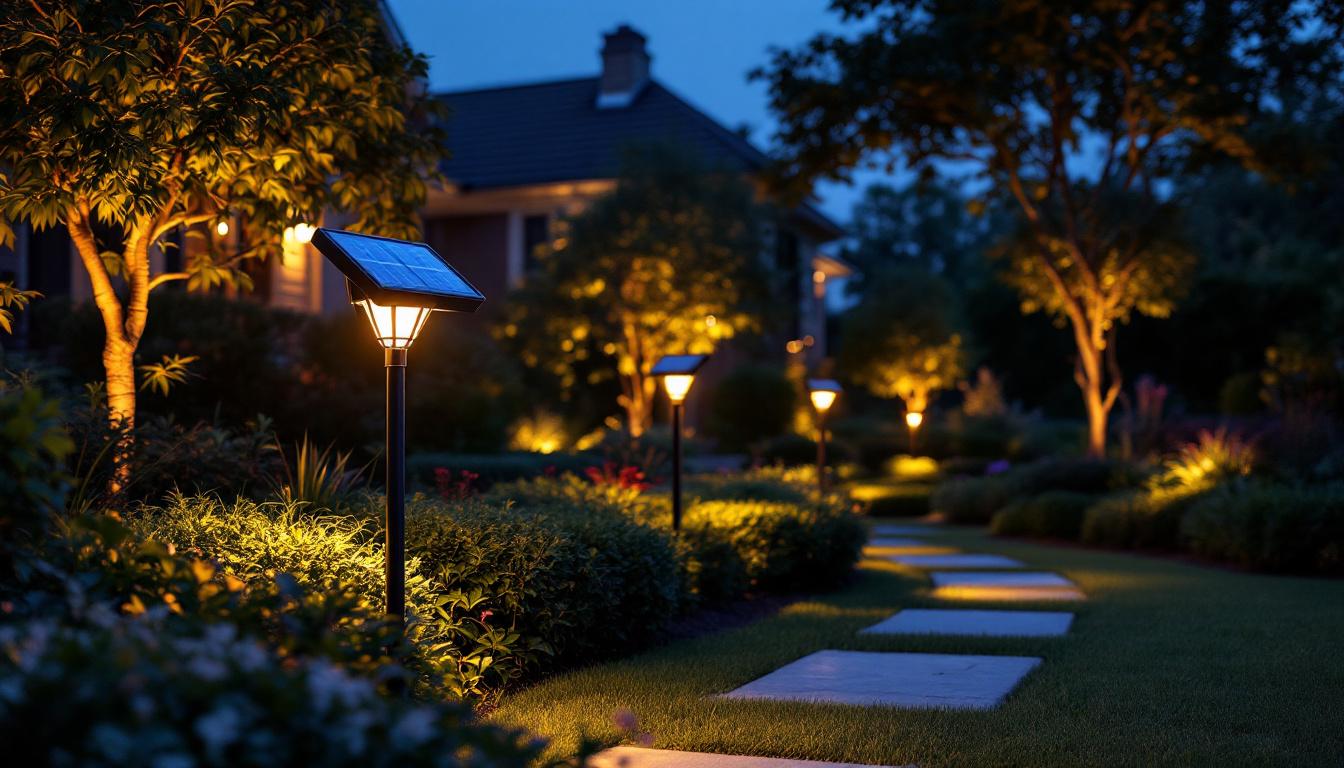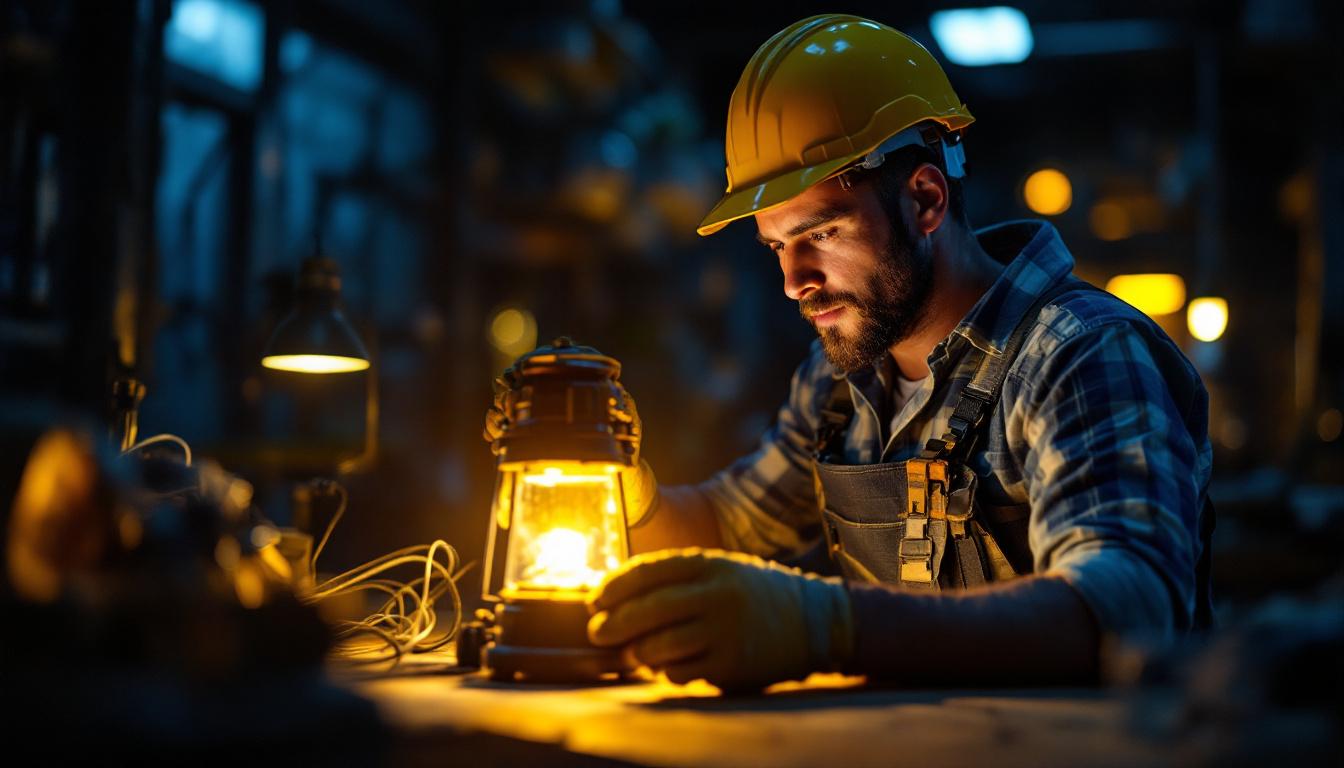
As the demand for outdoor lighting solutions continues to grow, lighting contractors are increasingly tasked with designing and installing exterior lights for commercial properties. This article delves into essential considerations, techniques, and best practices that can guide lighting contractors in delivering exceptional outdoor lighting solutions.
Exterior lighting plays a pivotal role in enhancing the functionality, safety, and aesthetic appeal of commercial spaces. Properly designed lighting can transform a mundane outdoor area into an inviting environment, attracting customers and improving security.
Moreover, effective exterior lighting can extend the usability of outdoor spaces, allowing businesses to operate beyond daylight hours. It can also highlight architectural features, signage, and landscaping, creating a cohesive and appealing image for the brand. The strategic use of lighting not only enhances visibility but also encourages social interaction, making outdoor areas more engaging and vibrant.
One of the primary functions of exterior lighting is to enhance safety and security. Well-lit pathways, parking lots, and building entrances deter criminal activity and reduce the likelihood of accidents. Lighting contractors must prioritize safety by ensuring that all areas are adequately illuminated without creating harsh glare or dark spots.
Utilizing motion sensors and timers can also improve security. These technologies can activate lights when movement is detected, ensuring that areas remain illuminated only when necessary, thus conserving energy. Additionally, incorporating smart lighting systems can allow business owners to monitor and control their exterior lighting remotely, providing an extra layer of convenience and security. This adaptability ensures that businesses can respond quickly to any potential safety concerns, further enhancing the overall security of the premises.
Beyond safety, exterior lighting contributes significantly to the ambiance of a commercial property. The right lighting can create a welcoming atmosphere, encouraging customers to linger and explore. Techniques such as uplighting, downlighting, and accent lighting can be employed to highlight architectural features and landscaping.
Contractors should consider the color temperature of the lights, as warmer tones tend to create a cozy and inviting environment, while cooler tones can evoke a more modern and sleek feel. The strategic placement of lights can also enhance the overall aesthetic, guiding the eye and drawing attention to key areas. Furthermore, seasonal lighting displays can add a festive touch during holidays, making the space even more inviting and memorable for customers. By integrating dynamic lighting designs that change with the seasons, businesses can maintain a fresh and appealing exterior that resonates with their clientele throughout the year.
When embarking on a commercial exterior lighting project, several key considerations must be taken into account. Understanding the unique requirements of each project is crucial for achieving optimal results.
Before designing an exterior lighting scheme, contractors should conduct a thorough assessment of the environment. This includes evaluating the existing infrastructure, landscaping, and the intended use of the space. Factors such as the surrounding architecture, local regulations, and potential light pollution must also be considered.
Understanding the specific needs of the business is vital. For example, a restaurant may require different lighting solutions compared to a retail store. Tailoring the lighting design to the unique characteristics of the environment will ensure that the final product meets the client’s expectations. Additionally, seasonal variations in natural light should be taken into account, as these can influence how the space is used and perceived throughout the year. For instance, areas that experience long summer evenings may benefit from more ambient lighting to encourage outdoor dining or socializing, while winter months may necessitate brighter, more focused lighting to enhance visibility and safety.
The selection of lighting fixtures is a critical aspect of any exterior lighting project. Contractors should consider the durability and weather resistance of fixtures, especially in areas prone to harsh weather conditions. Materials such as stainless steel, aluminum, and high-grade plastics are often recommended for their longevity and resilience.
Energy efficiency is another important factor. LED fixtures are becoming increasingly popular due to their low energy consumption and long lifespan. Additionally, they offer a wide range of color temperatures and styles, making them suitable for various applications. Beyond just energy efficiency, it is essential to consider the aesthetic appeal of the fixtures themselves. The design of the fixtures should complement the overall architecture of the building and the surrounding landscape, enhancing the visual appeal of the space while providing functional lighting. Furthermore, smart lighting technology can be integrated to allow for dynamic adjustments based on time of day or occupancy, further optimizing energy use and enhancing user experience.
A well-thought-out lighting layout can significantly impact the effectiveness of the lighting scheme. Contractors should utilize techniques such as layering light, which involves combining ambient, task, and accent lighting to create a balanced and functional environment.
Moreover, the spacing of fixtures is crucial. Overly spaced fixtures can lead to dark spots, while fixtures placed too closely can create excessive brightness. A careful balance must be achieved to ensure even illumination across the area. In addition to spacing, the height at which fixtures are mounted can also influence the overall effect of the lighting. For example, higher-mounted fixtures can provide broader coverage and reduce glare, while lower fixtures can create a more intimate atmosphere. Incorporating elements such as dimmers and motion sensors can also enhance the usability of the space, allowing for adjustments based on specific needs or events, and ensuring that the lighting remains functional and inviting at all times.
As businesses increasingly focus on sustainability, lighting contractors must prioritize energy-efficient solutions in their designs. Implementing sustainable practices not only benefits the environment but can also lead to cost savings for clients.
Smart lighting systems allow for greater control over exterior lighting. These systems can be programmed to adjust brightness based on natural light levels or occupancy, ensuring that energy is used efficiently. Additionally, smart lighting can be integrated with building management systems, providing further control and monitoring capabilities.
Contractors should educate clients on the benefits of these systems, emphasizing their potential to reduce energy consumption and lower utility bills. The initial investment in smart lighting can often be recouped through long-term savings.
Integrating renewable energy sources, such as solar panels, into exterior lighting designs is an excellent way to enhance sustainability. Solar-powered lights are particularly advantageous in remote areas or locations where electrical access is limited.
Contractors should consider the feasibility of solar lighting solutions for their projects, assessing factors such as sunlight exposure and battery storage capacity. By incorporating renewable energy, contractors can offer clients an eco-friendly lighting option that aligns with modern sustainability goals.
Compliance with local regulations and building codes is a crucial aspect of any commercial lighting project. Lighting contractors must stay informed about the relevant laws governing outdoor lighting to ensure that their designs meet all necessary requirements.
Local zoning laws often dictate the types of lighting that can be used in commercial spaces, including restrictions on brightness and light pollution. Contractors should familiarize themselves with these regulations to avoid potential fines or project delays.
Engaging with local authorities early in the design process can help clarify any restrictions and ensure that the project adheres to all regulations. This proactive approach can save time and resources in the long run.
Light pollution is a growing concern in urban areas, and contractors must take measures to minimize its impact. This includes selecting fixtures that direct light downward and using shielding to prevent light from spilling into unwanted areas.
Implementing controls such as timers and dimmers can also help reduce light pollution. By designing lighting schemes that prioritize both functionality and environmental responsibility, contractors can contribute to a more sustainable future.
Once the design phase is complete, the installation process begins. Following best practices during installation is essential for ensuring the longevity and effectiveness of the lighting system.
Ensuring proper wiring and electrical connections is critical for the safety and functionality of exterior lighting. Contractors should adhere to all electrical codes and standards, performing thorough inspections during installation.
Using high-quality materials and components will also enhance the durability of the lighting system. Waterproof connectors and weather-resistant fixtures are essential for outdoor applications, helping to prevent electrical failures and hazards.
After installation, testing the lighting system is crucial. This allows contractors to identify any issues and make necessary adjustments to achieve the desired effect. Observing the lighting at different times of day can help assess its performance and ensure that all areas are adequately illuminated.
Contractors should also encourage clients to provide feedback during this phase. Client input can be invaluable for making final adjustments and ensuring satisfaction with the completed project.
Once the exterior lighting system is installed, ongoing maintenance is essential for ensuring its longevity and effectiveness. Contractors should provide clients with clear guidelines on maintenance practices to keep the system in optimal condition.
Regular inspections of fixtures and wiring can help identify potential issues before they become significant problems. Contractors should recommend a maintenance schedule that includes checking for burnt-out bulbs, damaged fixtures, and signs of wear and tear.
Cleaning fixtures and lenses is also important for maintaining optimal light output. Dust, dirt, and debris can accumulate over time, diminishing the effectiveness of the lighting system. Simple cleaning procedures can significantly enhance performance and extend the lifespan of the fixtures.
As technology advances, lighting contractors should stay informed about new products and innovations in the industry. Periodically updating fixtures and systems can improve energy efficiency and performance, providing clients with the best possible solutions.
Contractors can also offer clients the option of retrofitting existing systems with newer technologies, such as LED upgrades or smart controls. This not only enhances the lighting experience but also aligns with sustainability goals.
Exterior lighting is a vital component of commercial properties, influencing safety, aesthetics, and functionality. By understanding the unique requirements of each project and implementing best practices in design, installation, and maintenance, lighting contractors can deliver exceptional outdoor lighting solutions.
As the industry continues to evolve, staying informed about new technologies and regulations will be key to success. By prioritizing energy efficiency, compliance, and client satisfaction, contractors can build a reputation for excellence in the field of exterior lighting.
Ready to elevate your commercial lighting projects with the highest quality fixtures at the best value? Look no further than LumenWholesale. Our extensive selection of spec-grade lighting products is designed to meet the rigorous demands of any exterior lighting project. With unbeatable wholesale prices and the convenience of free shipping on bulk orders, you can trust that you’re getting premium lighting solutions without the extra costs. Don’t let middleman markups affect your bottom line. Choose LumenWholesale for reliable, high-performance lighting that blends quality, affordability, and convenience seamlessly. Explore our collection now and discover the best in wholesale lighting at the best value.

Explore the essential insights on sodium vapor light bulbs tailored for lighting contractors.

Discover how solar panel landscape lighting boosts lighting contractors’ business growth, enhances project value, and offers eco-friendly, cost-saving solutions—learn more now!.

Discover how integrating Flat Panel 2X4 LED lighting can revolutionize your contracting business.

Discover the transformative impact of lantern light LEDs on modern lighting projects.